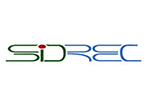Online Banking
Online security
OCBC Kill Switch
OCBC Kill Switch enables you to immediately block your current, savings, fixed deposit, loan accounts and card if you suspect you are a victim of a scam or if you believe your important account-related details have been compromised.
Once the Kill Switch is activated, no outgoing transactions - whether they're done digitally, via an ATM or at branches - can be made. Even recurring or pre-arranged fund transfers will be disabled.
You may activate Kill Switch by calling OCBC's contact number at 03-8317 5000 and pressing '8'.
The OCBC Kill Switch disables all of the following:
- Cash withdrawals
- Local and overseas fund transfers (outgoing)
- Bill payments
- Loan payments
- Recurring charges & standing instructions
- Visa & MasterCard transactions using ATM / credit / debit cards physically and digitally
Our Customer Service Executive will help you block access to your compromised bank account or cards, and issue new cards. Our Customer Service Executive will also record your scam report. Only our branch staff or Customer Service Executive can deactivate the Kill Switch, and this will only be carried out after receiving verified instructions from you. Once the Kill Switch is deactivated, your account will return to normal and all prior settings - including GIRO arrangements and future-dated fund transfers - will be reinstated.
You can activate OCBC Kill Switch without human intervention by calling OCBC Contact Centre at 03-8317 5000.
- Press 8 to temporarily block your accounts
- Enter 12-digit NRIC number followed by the hash key
- Enter 16-digit credit or debit card number
- Press 1 to confirm card number
- Press 1 to confirm account and cards suspension
- Stay on the line to speak to our Customer Service Executive to record your scam report
OCBC Online Banking Security Guarantee
At OCBC Bank, we are committed to protecting the security of your online transactions. Our website uses leading-edge and industry-standard technology and processes to ensure that your privacy and transactions are not compromised, and that your interests are safeguarded at all times.
In the unlikely event should you become a victim of an unauthorized transaction, please inform us immediately if you notice anything irregular. You can report to us at 03 8317 5000 or by contacting one of our branches.
Upon receipt of your report, we resolve to get back to you beyond 14 calendar days from the date a disputed transaction is first reported.
Depending on the complexity of the claims, we will notify you accordingly if we require more time for investigations.
You can play a part to protect yourself from fraud by adopting the following simple measures:
- Keep your 2-Factor Authentication Token secure at all times
- Do not share your security details with anyone (these include your Login ID, Password and 2-Factor Authentication Token)
- Equip your PC with the latest anti-virus software to protect yourself against any virus or malicious attack
Unauthorised transactions on account
Change your password and contact us immediately at 03 8317 5000
To change your password:
- Login to online banking.
- Under “My Profile” menu, Select “Change Password”
Your Password should be 8-12 characters only.
Timed log-off
If you leave your computer or forget to log off, our system will automatically log you off after 5 minutes.
Prevent browser from storing Login ID / Password
Deactivate the function accordingly:
Internet Explorer
- Launch your Internet Explorer browser and click on "Tools" >> "Internet Options" >> "Content".
- Under "AutoComplete", click on "Settings".
- Uncheck "User names and passwords on forms".
- Click "OK" to save your settings.
Mozilla Firefox
- Launch the Firefox browser and click on “Tools” >> “Options” >> “Security”.
- Under Passwords, uncheck “Remember passwords for sites”.
- Click "OK" to save your settings.
Google Chrome
- Launch the Chrome browser and click on the “Customise and control Google Chrome” icon.
- Click “Options” >> “Personal Stuff”.
Under Passwords, check “Never save passwords”
Verify that the website is secure
Things to remember:
- Check that you are on our official website at https://www.ocbc.com.my/internet-banking
- Check that the lock icon displayed is enabled at the bottom right-hand of the screen.
- You can also verify that the website has the security certificate. This is how you can check:
Internet Explorer
- Right-click your mouse.
- Select “Properties”.
- Click on “Certificates”.
- For secured site, you will see the details of the security certificate information.
- For unsecured site, there is no security certificate information.
Mozilla Firefox
- Site Identity Button will display in one of three colors - grey, blue, or green.
- Grey indicates that the site doesn't provide any identity information at all. Also, the connection between Firefox and the server is either unencrypted or only partially encrypted, and should not be considered safe against possible eavesdroppers.
- Blue indicates that the site's domain has been verified, and the connection between Firefox and the server is encrypted and therefore protected against eavesdroppers.
- Green indicates that the site provides fully verified identity information about its owner, and that the connection is encrypted.
Google Chrome
- Launch the Chrome browser and click on the “Customise and control Google Chrome” icon.
- Click “Options” >> “Under the Bonnet”.
- Under HTTPS/SSL, check the box for “Check for server certificate revocation”.
Clear browser cache after online banking session
Internet Explorer
- Go to “Tools”.
- Go to “Internet Options”.
- Select “General”.
- Under browsing history, click the “Delete” button and select “Temporary Internet files” and “Cookies” for IE8 and above.
- Click “OK” to delete all temporary internet files and cookies.
Mozilla Firefox
- Go to “Tool” >> “Clear recent history”
- Check the boxes for “Browsing & Download History” and “Cookies”
Google Chrome
- Launch the Chrome browser and click on the “Customise and control Google Chrome” icon.
- Click “Options” >> “Under the Bonnet”.
- Under “Privacy”, click “Clear browsing data”.
Error message indicating an unsecured connection
Please check that your browser is able to carry out secured transactions. This is how you can enable your browser to make such connections:
Internet Explorer
- Select “Tools” from the pull-down menu in your browser.
- Select “Internet Options”.
- Select “Advanced” tab.
- Scroll down to Security. Ensure that “Use TLS 1.2” is selected.
- Click “OK”.
Mozilla Firefox
- At the top of the Firefox window, click on the Firefox button (Tools menu in Windows XP) and click “Options”.
- Select the “Advanced” panel.
- Click the “Encryption” tab.
- Verify that “Use TLS 1.2” are checked.
- Click “OK”.
Google Chrome
- Click “Customise and Control Google Chrome” menu.
- Click “Options”.
- Select “Under the Bonnet” tab.
- Go to “HTTPS/SSL” section.
- Click “Manage certificates”.
In the “Certificates” window you can import, export and remove your SSL certificates.
Password Tips
Expression: Four of us climbed Gunung Brinchang in Cameron Highlands
Suggested password: 4oucGBiCH
Expression:Mango, lychee and longan puddings are my favourites
Suggested password: MLL9mfA
Expression:Monsoon begins in December
Suggested password: Mnbi12d
Important tips on how you can safeguard and protect your account
information.
(a) Password should be alphanumeric.
(b) Password should not be based on user-id, personal telephone number,
birthday or any other personal information.
(c) Password must be kept confidential and not be divulged to anyone.
(d) Password must be memorised and not be recorded anywhere.
(e) Password must be changed regularly.
(f) The same PASSWORD should not be used for different websites,
applications or services, particularly when they relate to different
entities.
(g) Please do not select the browser option for storing or retaining user
name and password.
(h) Please check the authenticity of the bank's website by comparing the
URL and observing the bank's name in its digital certificate or by observing
the indicators provided by an extended validation certificate.
(i) Please check that the bank's website address changes from http:// to
https:// and a security icon that looks like a look or key appears when
authentication and encryption is expected.
(j) Please do not allow anyone to keep, use or tamper with your 2FA
security token.
(k) Please do not reveal the OTP (One Time Password) generated by the 2FA
token to anyone.
(l) Please do not divulge the serial number of your 2FA token to anyone.
(m) Please check your bank account balance and transactions frequently
and report any discrepancy.
To login, please key in Internet Banking Login ID and a Password, which is only known to you.
During the Session
Once you have logged in, all communications are encrypted to protect the confidentiality of your transactions using Secure Sockets Layer (SSL 128 bit), the highest level of encryption used.
The session will automatically be terminated if account remains unused for 10 minutes.
This reduces risks of unauthorised access to your account.
Security Tips
|
Safeguard yourself against online scams
With the Email emerging as an increasingly important communication tool, it is critical to take precautionary measures against cyber frauds. 1. Be wary of:
(a) any false e-mail address, logo or graphic designed to mislead you into accepting the validity of any email or website;
2. Never access OCBC Internet Banking from a link in an email.
OCBC Bank (Malaysia) Berhad
OCBC Al-Amin Bank Berhad 5. Be aware of Phishing. Phishing is the term coined by hackers who imitate legitimate companies in e-mails to entice people to share passwords or credit card numbers. Before entering your Login ID (Username) and Password, you should always ensure that the website you are visiting belongs to OCBC. This can be verified by the URL displayed in your browser as well as the Bank's name in its digital certificate. This precaution will ensure that you are not revealing your OCBC Bank Internet Banking Login ID (Username) and Password to a website other than OCBC . Always check that our website address changes from http:// to https:// and a security icon, usually in the form of a lock or key, appears when authentication and encryption is expected. 6. OCBC does not make unsolicited requests for your personal information through e-mail or on phone unless you have initiated the contact. We will under no circumstances ask you to reveal your PIN. 7. You are advised to personally enter the domain name of the bank in your browser to log onto OCBC Internet Banking. You should not accept links or redirections from other websites or media for the purpose of logging onto OCBC Internet Banking. 8. Look for the SSL encrypted connection, indicated as https:// or a padlock, as well as check that the Bank's name is in its digital certificate. 9. You are advise to always be on the alert for phony websites and suspicious emails purporting to be from OCBC Bank. If you are aware off or have received such communication, please report immediately by contacting us.
You are encouraged to delete junk mail, chain mail or any other unsolicited email. Do not open email attachments from strangers.
OCBC Bank (Malaysia) Berhad
OCBC Al-Amin Bank Berhad
|
What is Malware?
Click here for more information.
























